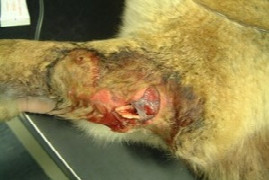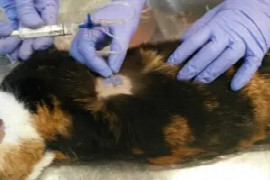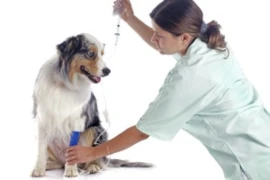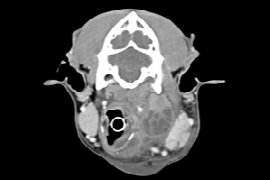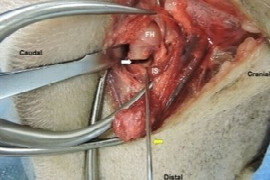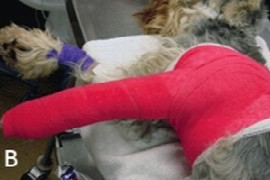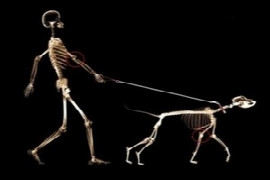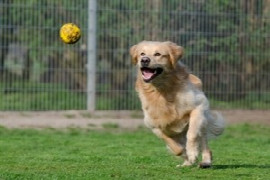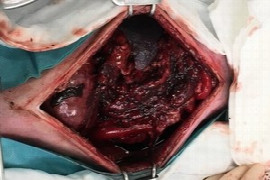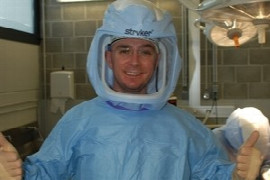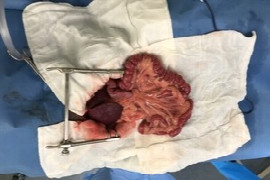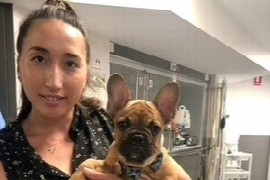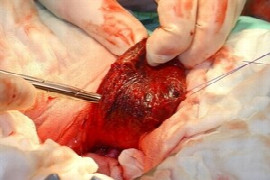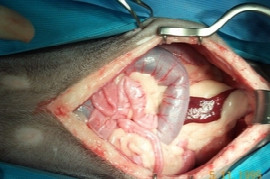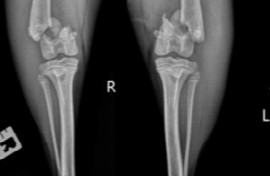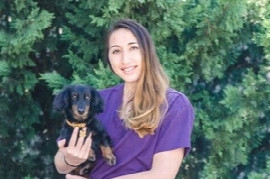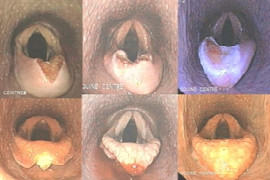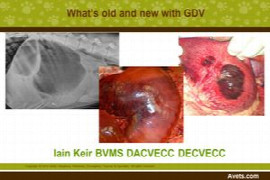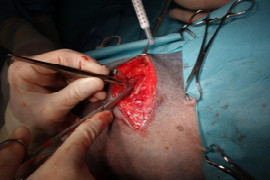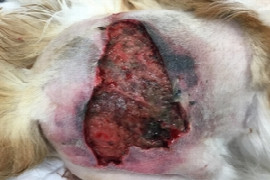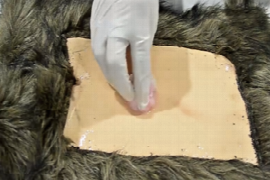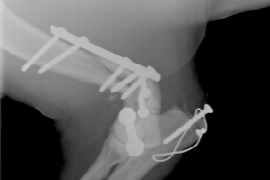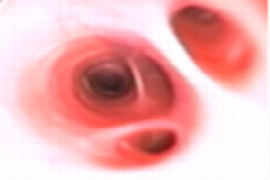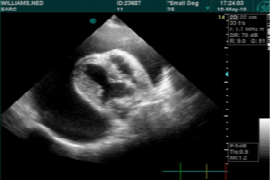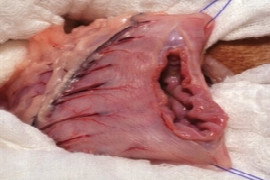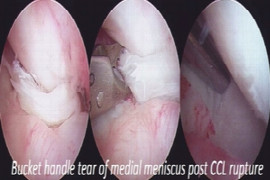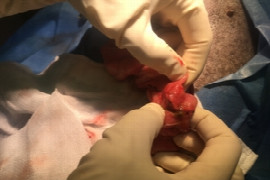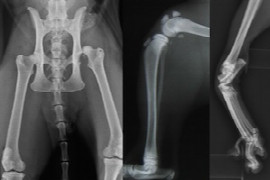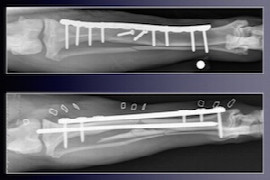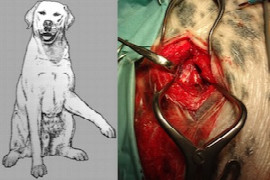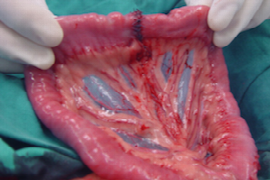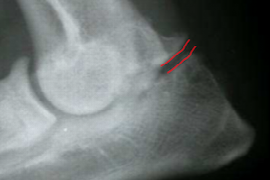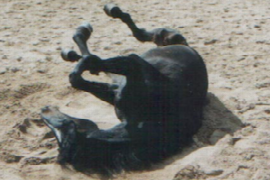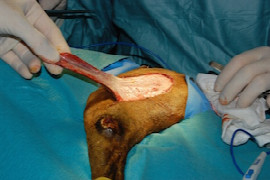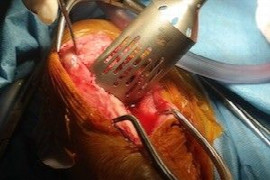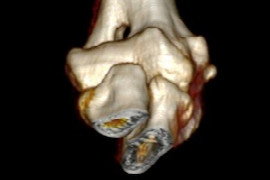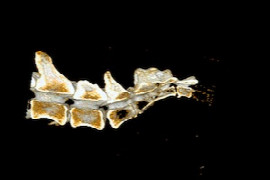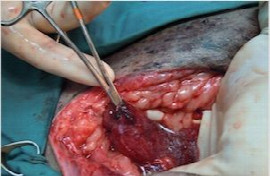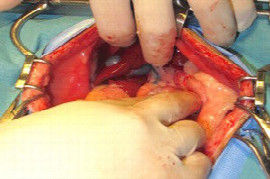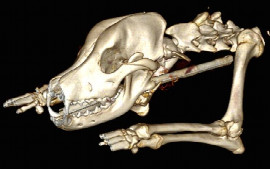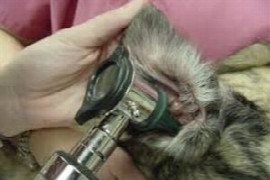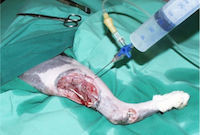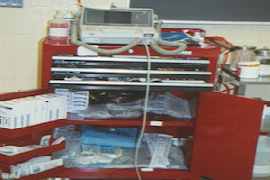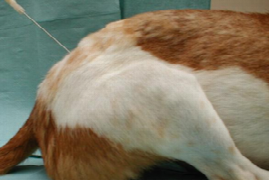How to Manage Orthopaedic Emergencies
In this presentation, Sandra will discuss the practical management of orthopaedic conditions that can be considered 'emergencies' - those in which the prognosis becomes much worse without rapid diagnosis and treatment. These include fractures that are open, associated with potential nerve injury or the growth plates of young animals, along with shearing injuries and septic joints. The principles of good wound management and the use of negative pressure therapy will be explored, along with decision-making around the optimal time for interventions, surgical or otherwise.
Duration:
1:04 h
Speaker:
Sandra Corr
from 1
US$ 46.20
(incl. tax)
(incl. tax)
Emergency Techniques - Let's get prepared
In this webinar indications, required material and different techniques for emergency procedures are presented using picture and movie material...
Duration:
1:01 h
Speaker:
Nadja Sigrist
from 1
US$ 46.20
(incl. tax)
(incl. tax)
Glyc-What - Explaining the Fundamental Role of the Endothelial Glycocalyx for Nurses
Revisiting a little bit of anatomy and physiology to gain an understanding in how this dynamic microstructure has become an important consideration when delivering IVFT to our patients.
Duration:
0:45 h
Speaker:
Jess Male Cert IV TAE, RVN, AVN, DipVN (ECC), RN, BSc, Biological and Biomedical
from 1
US$ 46.20
(incl. tax)
(incl. tax)
Surgery of the Head and Neck
Surgery of the head and neck - siaocoeles, abscesses, neoplasia and more
Duration:
1:04 h
Speaker:
Stephanie Colthurst
from 1
US$ 46.20
(incl. tax)
(incl. tax)
Femoral Head and Neck Ostectomy
Femoral head and neck ostectomy is one of the oldest but contemporary surgical techniques in small animal orthopaedics. It is a powerful, salvage procedure very relevant to the small animal practitioner...
Duration:
0:42 h
Speaker:
Wye Chong
from 1
US$ 46.20
(incl. tax)
(incl. tax)
Complications with Fracture Repair
Before fracture repair, fracture complications, fracture management, and after the fracture repair!
Duration:
0:39 h
Speaker:
Jack Davey
from 1
US$ 46.20
(incl. tax)
(incl. tax)
Responding to Medical Errors and Adverse Events
This webinar will provide a six step framework for responding when an adverse event or medical error occurs in your practice.
Duration:
0:43 h
Speaker:
Beth Davidow
from 1
US$ 46.20
(incl. tax)
(incl. tax)
Anaesthesia Mistake Awareness For Nurses
During this session, you'll discover the most common causes of anaesthesia-related errors as well as insight on how to prevent them...
Duration:
0:54 h
Speaker:
Heidi Reuss-Lamky
from 1
US$ 46.20
(incl. tax)
(incl. tax)
The Anatomy of the Elbow - relearn and apply it!
Let us revise the anatomy of the canine elbow and use this knowledge to understand and easily identify relevant deviations to normal.
Duration:
1:04 h
Speaker:
Maria Munz
from 1
US$ 46.20
(incl. tax)
(incl. tax)
Running with Dogs
There is a great deal of misinformation regarding exercising young dogs. Much of this is anecdotal without scientific evidence. While there is much to be learned regarding exercise and training of young dogs, there is a growing body of evidence that suggests young dogs can safely exercise and train. However, there are some precautions. The evidence of exercise in young dogs and these cautions will be discussed in this talk.
Duration:
0:55 h
Speaker:
Darryl Millis
from 1
US$ 46.20
(incl. tax)
(incl. tax)
The Diagnosis and Management of Gut Stasis in Rabbits
"Rabbits just die, don't they?" Is a common phrase heard in emergency clinics. The fact is sick rabbits can often be diagnosed and saved - and using many of the skills that emergency vets already possess!..
Duration:
1:18 h
Speaker:
Gerry Skinner
from 1
US$ 46.20
(incl. tax)
(incl. tax)
Pre-operative and intra-operative surgical considerations for haemabdomen
Haemabdomen - What to consider before embarking upon surgery A haemabdomen is commonly identified in emergency practice. This presentation is often accompanied by standard owner communication where the assumption is that the bleeding is originating from a splenic mass that is presumed to be a haemangiosarcoma...
Duration:
0:45 h
Speaker:
Carla Appelgrein
from 1
US$ 46.20
(incl. tax)
(incl. tax)
Prevention of Surgical Site Infection for Nurses
Surgical site infections (SSI) are the burden of surgery. They lead to increased health care cost due to additional treatment, antibiotics, hospital stay and excess death. Further, these complications create emotional and financial distress for owners and drastically affect the animal’s welfare...
Duration:
0:57 h
Speaker:
Denis Verwilghen
from 1
US$ 46.20
(incl. tax)
(incl. tax)
Its an intestinal foreign body, now what? Tips for approaching gastrointestinal surgery with confidence
Gastrointestinal foreign bodies can be some of the most rewarding surgical emergency cases, but the potential for serious complications can make these cases daunting! In this webinar, we will discuss surgical techniques for foreign body retrieval at each level of the GI tract (gastrotomy, enterotomy, intestinal resection-anastomosis), as well as some practical tips for managing linear foreign bodies in dogs and cats...
Duration:
0:55 h
Speaker:
Bronwyn Fullagar
from 1
US$ 46.20
(incl. tax)
(incl. tax)
Surgical options for Brachycephalic Airway Syndrome
As brachycephalic breeds continue to increase in popularity, the diagnosis and treatment of brachycephalic airway syndrome (BAS) is ever important in improving the quality of life of these animals. This presentation will cover surgery for BAS including treatment of stenotic nares, redundant/elongated soft palate, laryngeal saccule eversion and laryngeal collapse.
Duration:
0:48 h
Speaker:
Stephanie Colthurst
from 1
US$ 46.20
(incl. tax)
(incl. tax)
Surgery of the Urinary System: When, how and why to use cystotomy tubes.
In this webinar we will be discussing how to manage cases that require urinary diversion. This may be a blocked cat, urethral trauma, neurological disease, or palliative care for trigonal neoplasia. Understanding how to best manage these patients in the short and long term is essential to the overall success of treatment. Although urethral catheterisation is relatively simple, it can be challenging in some cases and it never allows us to assess the patient’s ability to urinate when it is still in place. In contrast, a cystotomy tube is predictable to place and allows long term management, including being able to assess voluntary urination without removal. We will discuss when, how and why to use cystotomy tubes so that this technique can be applied in a wide range of scenarios in general practice.
Duration:
0:49 h
Speaker:
Kat Crosse
from 1
US$ 46.20
(incl. tax)
(incl. tax)
Avoid the “Peak and Shriek” - Getting the most out of your exploratory laparotomies.
In this lecture, Charles will be presenting a systematic approach to the abdominal exploration in dogs and cats, concentrating on indications, what to look for when you’re in the abdomen and what to do when you find abnormalities. He will also discuss biopsy techniques and some tricks for intestinal resection and anastomosis.
Duration:
0:41 h
Speaker:
Charles Kuntz
from 1
US$ 46.20
(incl. tax)
(incl. tax)
Fracture classification, acute management and decision making
This webinar aims to improve the confidence of clinicians when presented with a patient that has suffered a fracture injury - mostly discussing appendicular fractures but also touching on axial fractures as well. We will cover the various fracture classification schemes and how the classification can influence the treatment course for the patient, including immediate stabilisation of the patient and management of the fracture site. We will then discuss decision making schemes for treatment of the fracture, as well as delving into important prognostic factors that may need to be addressed with owners.
Duration:
0:37 h
Speaker:
Kathryn Duncan
from 1
US$ 46.20
(incl. tax)
(incl. tax)
Wound Management and Reconstructive Surgery in Dogs and Cats
Not all wounds are created equal. Management and closure of wounds whether traumatic or surgically created (following mass removal for example) relies on a sound understanding of principles of wound healing and relevant patient and wound characteristics that can influence outcome. This webinar summarises and highlights key aspects of wound management and reconstructive surgery in dogs and cats with attention to relevant background principles of wound healing as well as clinical tips and tricks for practice. Areas to be covered include an overview of wound healing and factors affecting healing, methods of primary wound closure, open wound management and reconstructive methods including tension relieving techniques, skin flaps and skin grafts.
Duration:
0:57 h
Speaker:
Stephanie Colthurst
from 1
US$ 46.20
(incl. tax)
(incl. tax)
Laryngeal Paralysis
Laryngeal paralysis (LP) is a common and important presentation in the dog; despite this, the condition is often mis -diagnosed and few veterinarians feel confident enough to attempt the corrective surgery. The major reasons for this appear to be:
- Lack of familiarity with the functional anatomy of the larynx,
- A view that the remedial surgery is too complex to undertake and carries a high incidence of complications.
This webinar will use the medium of 3-D videos to:
- explain the mysteries of laryngeal functional anatomy,
- present a safe and simple surgery for the management of LP,
- highlight the reasons that other techniques often result in a high incidence of complications.
Duration:
1:31 h
Speaker:
Dick White
from 1
US$ 46.20
(incl. tax)
(incl. tax)
Equine upper respiratory tract surgery – a revision of where we are and what is new
This webinar will review an array of URT abnormalities in horses highlighting differences which can dramatically impact case treatment options and prognosis. New developments in treatment options focused on the URT will be presented and discussed. There have recently been some significant exciting additions to the field of equine URT surgery. These include standing laryngoplasty procedures that have been a massive change in laryngoplasty technique. Also, extremely exciting new treatment options for coughing horses post laryngoplasty of artyenoidectomy. Finally, standing arytenoidectomy surgery offers a third useful addition to the URT surgery tool box. A variety of images and videos of pre-operative diagnosis highlighting pre-operative considerations and further images / videos of surgical procedures will lead into several focused-on results that can be expected / achieved. Join Ben for an interesting ride through the URT of horses and how you can maximise treatment outcomes.
This webinar will review an array of URT abnormalities in horses highlighting differences which can dramatically impact case treatment options and prognosis. New developments in treatment options focused on the URT will be presented and discussed. There have recently been some significant exciting additions to the field of equine URT surgery. These include standing laryngoplasty procedures that have been a massive change in laryngoplasty technique. Also, extremely exciting new treatment options for coughing horses post laryngoplasty of artyenoidectomy. Finally, standing arytenoidectomy surgery offers a third useful addition to the URT surgery tool box. A variety of images and videos of pre-operative diagnosis highlighting pre-operative considerations and further images / videos of surgical procedures will lead into several focused-on results that can be expected / achieved. Join Ben for an interesting ride through the URT of horses and how you can maximise treatment outcomes.
Duration:
0:43 h
Speaker:
Ben Ahern
from 1
US$ 46.20
(incl. tax)
(incl. tax)
What's old and new with GDV
This webinar will provide the audience with a comprehensive review of dogs that present with a GDV. The webinar will cover common and uncommon patient presentations, new strategies for patient resuscitation including the effects of crystalloids and colloids, monitoring fluid responsiveness, avoiding fluid overload, and when to intervene with vasoactive drugs. The use of biomarkers to guide therapy and improve prognostication will be discussed. Following stabilization safe anesthetic strategies will be presented to help minimize anesthetic complications. Then we will discuss surgical aspects including assessing gastric viability, when to perform splenectomy and post-operative patient care. In addition common complications will be discussed including how to prevent these complications from occurring and how to treat these complications effectively.
Duration:
1:07 h
Speaker:
Iain Keir
from 1
US$ 46.20
(incl. tax)
(incl. tax)
Peri-operative antimicrobial use
Indiscriminate use of antimicrobials is an international concern in health sciences and veterinarians have a responsibility to adhere to appropriate practice. The risk of surgical site infection (SSI) in small animal surgery poses a challenge in some situations and perioperative antimicrobials play a role in reducing this risk. Considerations for antimicrobial use in small animal surgery will be discussed, examining NRC surgery classification and SSI risk, and presenting discussion on drug selection and duration of administration. Evidence-based literature and reference to prescribing guidelines will be included.
Duration:
0:52 h
Speaker:
Giselle Hosgood
from 1
US$ 46.20
(incl. tax)
(incl. tax)
Tips and tricks for management of dog bite injuries
Dog bite injuries are all too common in veterinary practice. These are potentially very challenging injuries to manage. Sometimes what you see is what you get, other times the external wounds are just the tip of the iceberg. Occasionally what starts out as a simple wound can progress and result in large areas of skin necrosis. In this webinar Dr. Simcock will review options for investigation and management of these potentially difficult injuries. From diagnostic options through to reconstructive surgical treatments this webinar you will give you a toolbox full of tips and tricks to help you with your decision making and treatment options next time you encounter one of these injuries.
Duration:
0:59 h
Speaker:
James Simcock
from 1
US$ 46.20
(incl. tax)
(incl. tax)
Surgical Skin Preparation - Recommendations and current literature (for Nurses)
Surgical skin preparation has long started many a debate over the correct method and solutions. In this webinar, we'll explore what the current literature is recommending and how we can adapt human hospital standards to our much hairier veterinary patients. Inadequate practices can increase the risk of surgical site infections and incorrect use of antiseptics can contribute to the wider issue of growing antimicrobial resistance. Instigating change can be difficult but taking an evidence-based approach can help introduce new skin preparation protocols.
Duration:
0:42 h
Speaker:
Harrie Phillips
from 1
US$ 46.20
(incl. tax)
(incl. tax)
Fracture fixation - how to avoid the dreaded revision surgery
The best option for both the pet, owner and surgeon is to get a fracture to heal well on the first attempt. Most complications are due to poor decision making rather than poor technique. This webinar will highlight the management and more importantly the avoidance of the most common types of fracture complications.
Specific types and locations of fractures, which are associated with an increased risk of failure, will be discussed with strategies to avoid this occurring. The various implant systems (pins, ESF, plates and locking plates), available will also be described. The advantages and disadvantages of each implant system and the guidelines for application of each system will be highlighted. The relevance of how this relates to the risk of complications will discussed.
Using a case-based approach from over 10 years of specialist orthopaedic practice, various types of complications will be demonstrated as well as strategies for revision surgery. By the end of this webinar the delegate will have a good understanding of why some complications occur and therefore how best to avoid them.
Duration:
0:55 h
Speaker:
Alasdair Renwick
from 1
US$ 46.20
(incl. tax)
(incl. tax)
Endoscopy of the airways in dogs and cats
During this presentation you will learn how much information you can get from an endoscopy of the airways, the type of samples that can be collected and the treatments that can be done under endoscopic guidance such as airway stenting. Using endoscopic images, you will travel from the nasal cavity, nasopharynx, larynx to the trachea and down into the bronchi. Images of normal airways and varied pathological states will be shown. The benefits as well as potential complications of the most common procedures will be presented as we explore step-by-step the respiratory tract. Finally we will touch on what tests and treatment trials can be done before referring and discuss when it is time to refer. Any question on this interesting topic will be welcome.
Duration:
0:45 h
Speaker:
Erika Meler
from 1
US$ 46.20
(incl. tax)
(incl. tax)
Pericardial effusion
This webinar will look at the diagnosis, treatment and prognosis or patients with pericardial effusion. Topics for the lecture will include how to diagnose the cause of the pericardial effusion, how to perform a pericardiocentesis in practice, what medical therapies may be beneficial and when to administer and which may be detrimental. The prognosis for patients with pericardial effusion will also be discussed.
Duration:
1:01 h
Speaker:
Richard Woolley
from 1
US$ 46.20
(incl. tax)
(incl. tax)
Surgery of the stomach and intestinal tract
Gastrointestinal surgery can be a lifesaving procedure. It is one of the most common surgeries performed in an emergency setting and emergency surgeons should be competent and confident in opening and closing the stomach and intestines. This webinar covers surgical approaches to the stomach and intestinal tract with a focus on practical tips to give the participant confidence and reduce complications. Topic covered include basic anatomy, gastrotomy and enterotomy techniques, decision making and dealing with complications as well as basic post-operative care.
Duration:
0:51 h
Speaker:
Jacob Michelsen
from 1
US$ 46.20
(incl. tax)
(incl. tax)
Cranial cruciate ligament disease
The most common canine orthopaedic disease, yet one of the most poorly understood. This webinar will bring into focus current understanding of disease aetiology, pathophysiology, diagnosis, treatment options and outcomes. Light will be shed on the diverse range of treatment options, with an evaluation of the evidence to support (or possibly refute) their use. Throughout the webinar, practical tips and tricks will be provided for incorporation into your practice to improve early detection and treatment.
Duration:
1:00 h
Speaker:
Ricky Cashmore
from 1
US$ 46.20
(incl. tax)
(incl. tax)
Basic surgical procedures
Abdominal surgery requires knowledge of appropriate anatomy and tissue handling, appropriate surgical training and guidance, surgical techniques, appropriate instrumentation and peri-operative management and care. Appropriate surgical training and guidance, in addition to up-to-date knowledge of anatomy, pathophysiology, and surgical methods, with close adherence to Halstead’s surgical methods, will all contribute to a successful surgical outcome.
Duration:
1:01 h
Speaker:
Tania Banks
from 1
US$ 46.20
(incl. tax)
(incl. tax)
Traumatic joint injuries in cats
In this lecture the participants will see some typical joint luxations and fractures of our feline patients. We will put our focus in the discussion about treatment and treatment results. After this seminar every attendant will have an idea how to treat common joint injuries in cats and what the prognosis is likely to be.
Duration:
0:49 h
Speaker:
Eva Schnabl-Feichter
from 1
US$ 46.20
(incl. tax)
(incl. tax)
Simple Ways to treat Difficult Fractures in Dogs and Cats
Do you have difficulty approaching or reducing long bone fractures? Are you interested in learning simple techniques designed for the general practitioner to repair the most commonly fractures seen in dogs and cats? This course is the one for you! You will learn reliable techniques and give valuable practical tips useful in repairing simple and more challenging comminuted fractures of long bones. New implant designs have made fracture repair much more simple and affordable. In addition, postoperative management of patients has also been simplified and complications are rare if the principles of fracture repair are followed. This course will familiarize participants with fracture repair techniques through lecture and clinical case presentations.
Duration:
0:58 h
Speaker:
Brian Beale
from 1
US$ 46.20
(incl. tax)
(incl. tax)
Muscle and Tendon injuries - what can we miss on our orthopaedic exam and how can we treat them
This interactive webinar will give the participant an overview of common muscle and tendon injuries. Furthermore, contracture of the semitendinosis, gracilis, infraspinatus and quadriceps muscle will be discussed. Attendees will learn about pathophysiology, clinical symptoms and gait abnormalities caused by those injuries. Therefore, videos of dogs will be shown and together analysed. Conservative and surgical treatment options, possible complications and prognosis will be thought. After the lecture the participant will be able to distinguish gait abnormalities due to tendon and muscle injuries from other causes of lameness.
Duration:
0:41 h
Speaker:
Eva Schnabl-Feichter
from 1
US$ 46.20
(incl. tax)
(incl. tax)
Basic laboratory of suturing and abdominal techniques
Learn to produce minimal tissue trauma for a better healing and how to avoid postoperative incision leak in your gastrointestinal and urinary surgeries.
Duration:
1:21 h
Speaker:
Pilar Lafuente
from 1
US$ 46.20
(incl. tax)
(incl. tax)
Advances in the Management of Elbow Dysplasia
Elbow dysplasia is a condition involving multiple developmental abnormalities of the elbow-joint in the dog, specifically the growth of cartilage or the structures surrounding it. The most common cause is osteochondrosis, which is a disease of the joint cartilage, and specifically Osteochondritis dissecans (OCD). James will be discussing the relevant treatment options available for these dogs and what advances have been made within the Veterinary field to combat this condition.
Duration:
1:04 h
Speaker:
James Simcock
from 1
US$ 46.20
(incl. tax)
(incl. tax)
Colic in The Field
Equine colic is a relatively common disorder of the digestive system. The most common forms of colic are gastrointestinal in nature and are most often related to colonic disturbance. Among domesticated horses, colic is the leading cause of premature death and it has been estimated that between four and ten percent of the horse population suffer from colic.
In this webinar Robyn will be discussing the different types of colic, colic diagnosis and treatment options when in the field.
Duration:
1:05 h
Speaker:
Robyn Charman
from 1
US$ 46.20
(incl. tax)
(incl. tax)
Managing wounds - from theory to your practice
In this webinar, Dr Simcock will review the fundamentals of wound healing and how this knowledge can influence your decision making when dealing with a variety of wounds. This webinar will provide you with a practical, repeatable and simple approach to wound management that is applicable to a huge number of clinical situations.
Duration:
1:00 h
Speaker:
James Simcock
from 1
US$ 46.20
(incl. tax)
(incl. tax)
Pelvic limb lameness. Putting the puzzle together.
Pelvic limb lameness is seen very commonly in general practice. In this lecture James will review two of the common causes for pelvic lib lameness- hip dysplasia and Cruciate disease.
Duration:
1:00 h
Speaker:
James Simcock
from 1
US$ 46.20
(incl. tax)
(incl. tax)
Thoracic limb lameness. It’s all about the elbow, isn’t it?
Thoracic limb lameness can be challenging problem in small animal practice. It can often be difficult to definitively diagnose the problem. Once a diagnosis is made it is often difficult to know what the best course of action is for treatment. In this lecture James will review some of the common causes of thoracic limb lameness.
Duration:
0:46 h
Speaker:
James Simcock
from 1
US$ 46.20
(incl. tax)
(incl. tax)
Diagnosis and management of lumbosacral disease
Lumbosacral disease is a common and debilitating disease in large breed dogs which can be difficult to diagnose. Many of the clinical signs of LS disease are shared with other orthopedic conditions and it is essential that the clinician performs a thorough and targeted orthopedic and neurological exam. Whilst the most common cause of LS pain in large breed dogs is degenerative lumbosacral stenosis, plain and advanced imaging allow identification of differential diagnoses such as diskospondylitis, neoplasia and osteochondrosis. In DLSS, the cause of the dogs pain has to be determined by specific etiology, be it dorsal compression, lateral compression, retrolisthesis etc. Only then can surgical or conservative regimes be correctly targeted. This webinar will go through the diagnostic pathway and look at recent developments in the diagnosis and management of this common condition.
Duration:
0:49 h
Speaker:
Andrew Worth
from 1
US$ 46.20
(incl. tax)
(incl. tax)
Decision making with abdominal trauma
Abdominal injuries in small animal practice can occur as a result of any number of traumatic incidents. Injuries can vary widely in severity and can affect a variety of body systems.
Duration:
1:13 h
Speaker:
James Simcock
from 1
US$ 46.20
(incl. tax)
(incl. tax)
Thoracic trauma
Thoracic trauma frequently results from motor-vehicle related accidents, animal attacks and falls. In this webinar, Charles will discuss rib fractures, diaphragmatic hernia, flail chest, myocardial infarction, pulmonary contusion and more. Charles will discuss aetiology, diagnosis, treatment and when not to treat). He will also discuss the latest publications which address prognostic factors and best practices treatment.
Duration:
0:56 h
Speaker:
Charles Kuntz
from 1
US$ 46.20
(incl. tax)
(incl. tax)
Decision making with thoracic limb lameness
Thoracic limb lameness in dogs is common problem. Investigation and management of this issue can be challenging. In this webinar Dr. Simcock will discuss various aspects of thoracic limb lameness to help with your decision making when dealing with these cases. He will discuss tips and tricks for the clinical examination, recent advances in the treatment of elbow dysplasia and common causes and treatment of shoulder lameness. What's the best approach to patients in small animal practice with chronic diarrhoea. Do they need biopsies or can less invasive diagnostic tools yield similar results and how shall these cases be treated.
Duration:
1:08 h
Speaker:
James Simcock
from 1
US$ 46.20
(incl. tax)
(incl. tax)
Otitis Management and Treatments
Animals are commonly prone to ear infection, and this is one of the most common manifestations of allergy in dogs. Infections can be caused by both bacterial and fungal origin, as well as small organisms such as ear mites. Fiona will cover diagnosis, management and the best treatment options available.
Duration:
1:10 h
Speaker:
Fiona Bateman
from 1
US$ 46.20
(incl. tax)
(incl. tax)
Basics of Wound Management
A range of options can be considered where local skin tension, lack of adjacent skin or close vicinity of important organs precludes primary closure. These options include the use of local skin flaps, distant skin flaps, axial pattern flaps, skin stretching and free skin grafts. This webinar aims to give you a better understanding of wound healing, surgical principles and common reconstructive techniques.
Duration:
0:55 h
Speaker:
Hannes Bergmann
from 1
US$ 46.20
(incl. tax)
(incl. tax)
Triage and intial stabilisation of the trauma patient
To sort out or prioritise treatment necessities based on urgency is a quick and very important procedure and should be done immediately on the patient's arrival at the clinic.
Duration:
1:01 h
Speaker:
Tobias Grave
from 1
US$ 46.20
(incl. tax)
(incl. tax)
Understanding and Troubleshooting Small Animal Anaesthesia (for veterinary nurses)
Anaesthesia step by step: an overview from the pre-anaesthetic examination, induction, maintenance, monitoring and recovery.
Duration:
1:08 h
Speaker:
Leah Bradbury
from 1
US$ 46.20
(incl. tax)
(incl. tax)
